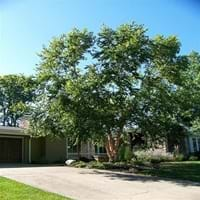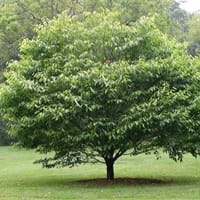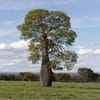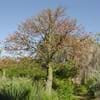Life Span
Biennial
Perennial
Origin
Mid-Atlantic United States, Southeastern United States, Central United States, South-Central United States
North America, United States, Northeastern United States, Mid-Atlantic United States, Southeastern United States, Central United States, South-Central United States, Texas, Mexico, Europe
Types
Yellow Birch, Paper Birch, River Birch
Carpinus caroliniana caroliniana, Carpinus caroliniana virginiana
Habitat
Hills, Moist Soils
Not Available
USDA Hardiness Zone
4-9
3-9
Sunset Zone
1a, 1b, 2a, 2b, 3a, 3b, 4, 5, 6, 7, 8, 9, 10, 11, 12, 13, 14, 15, 16, 17, 18, 19, 20, 21, 22, 23, 24
1a, 1b, 2a, 2b, 3a, 3b, 4, 5, 6, 7, 8, 9, 14, 15, 16, 17
Habit
Oval or Rounded
Spreading
Flower Color
Yellow, Brown
Yellow, Yellow green
Flower Color Modifier
Bicolor
Bicolor
Leaf Color in Spring
Green, Light Green
Green, Light Green
Leaf Color in Summer
Green, Light Green
Dark Green
Leaf Color in Fall
Yellow, Light Yellow, Tan
Yellow, Yellow green, Orange Red
Leaf Color in Winter
Not Available
Not Available
Leaf Shape
Pinnate
Pinnate
Plant Season
Spring, Summer, Fall, Winter
Summer, Fall
Sunlight
Full Sun, Partial Sun
Full Sun, Partial Sun, Partial shade, Full Shade
Type of Soil
Clay, Loam
Clay, Loam
The pH of Soil
Acidic, Neutral
Acidic, Neutral
Soil Drainage
Average
Average
Tolerances
Wet Site, Pollution, Soil Compaction
Wet Site
Where to Plant?
Ground
Ground
How to Plant?
Seedlings
Not Available
Plant Maintenance
Medium
Medium
Watering Requirements
Requires watering in the growing season, Water daily during growing season, Water Deeply, Water more frequently during periods of extreme drought
Requires regular watering
In Summer
Lots of watering
Lots of watering
In Spring
Moderate
Moderate
In Winter
Average Water
Average Water
Soil pH
Acidic, Neutral
Acidic, Neutral
Soil Type
Clay, Loam
Clay, Loam
Soil Drainage Capacity
Average
Average
Sun Exposure
Full Sun, Partial Sun
Full Sun, Partial Sun, Partial shade, Full Shade
Pruning
Remove branches, Remove damaged leaves, Remove dead branches, Remove dead leaves, Remove dead or diseased plant parts, Remove hanging branches
Requires very little pruning
Fertilizers
All-Purpose Liquid Fertilizer, fertilize twice a year, Nitrogen
All-Purpose Liquid Fertilizer
Pests and Diseases
Red blotch
Canker, fungus
Plant Tolerance
Pollution, Soil Compaction, Wet Site
Wet Site
Flower Petal Number
Not Available
Not Available
Fragrant Leaf
No
Not Available
Foliage Texture
Medium
Medium
Foliage Sheen
Matte
Glossy
Attracts
Ants, Aphids, Birds, Not Available
Not Available
Allergy
Not Available
Not Available
Aesthetic Uses
Not Used For Aesthetic Purpose
Showy Purposes, small hedge
Beauty Benefits
Good for skin
Good for the Scalp, Stops hair loss
Environmental Uses
Air purification, Nesting sites for birds, Shadow Tree, Shelter for wildlife, Wildlife
Air purification
Medicinal Uses
Antibacterial, anti-inflammatory, Arthritis, Boils, bowel syndrome, Combats Stress, Diarrhea, Dysentry, Heart problems, Kidney Stones, Osteoarthritis, Skin Disorders, Urinary tract problems
Anxiety, Bleeding, Cold, Cough, Cuts, Eye Infection, Fatigue, Fights Depression, Insomnia, Menstrual Disorders, Wounds
Part of Plant Used
Bark, Leaves, Sap
Whole plant
Other Uses
Medicinal oil, Used as essential oil
Used as firewood, Used as Ornamental plant, Used for its medicinal properties, Used for woodware
Used As Indoor Plant
No
No
Used As Outdoor Plant
Yes
Yes
Garden Design
Feature Plant, Shade Trees
Hedges, Screening / Wind Break, Shade Trees, Street Trees
Botanical Name
BETULA nigra 'Studetec'
CARPINUS caroliniana
Common Name
Black Birch, River Birch, Tecumseh Compact River Birch
American Hornbeam, Musclewood, blue-beech, Ironwood
In Hindi
काले बर्च वृक्ष
अमेरिकी हानबीन
In German
Schwarze Birke
Amerikanische Hainbuche
In French
Noir Bouleau
Charme de Caroline
In Spanish
Negro del árbol de abedul
Carpinus caroliniana
In Greek
Μαύρο Birch Tree
american γαύρο
In Portuguese
Bétula Preto
Carpinus caroliniana
In Polish
Czarny Brzoza
Grab amerykański
In Latin
Niger Caerulus
american hornbeam
Phylum
Magnoliophyta
Magnoliophyta
Class
Magnoliopsida
Magnoliopsida
Family
Betulaceae
Betulaceae
Clade
Angiosperms, Eudicots, Rosids
Angiosperms, Eudicots, Rosids
Tribe
Not Available
Not Available
Subfamily
Not Available
Not Available
Season and Care of Black Birch and American Hornbeam
Season and care of Black Birch and American Hornbeam is important to know. While considering everything about Black Birch and American Hornbeam Care, growing season is an essential factor. Black Birch season is Spring, Summer, Fall and Winter and American Hornbeam season is Spring, Summer, Fall and Winter. The type of soil for Black Birch is Clay, Loam and for American Hornbeam is Clay, Loam while the PH of soil for Black Birch is Acidic, Neutral and for American Hornbeam is Acidic, Neutral.
Black Birch and American Hornbeam Physical Information
Black Birch and American Hornbeam physical information is very important for comparison. Black Birch height is 2,133.60 cm and width 762.00 cm whereas American Hornbeam height is 610.00 cm and width 1,070.00 cm. The color specification of Black Birch and American Hornbeam are as follows:
Black Birch flower color: Yellow and Brown
Black Birch leaf color: Green and Light Green
American Hornbeam flower color: Yellow and Yellow green
- American Hornbeam leaf color: Green and Light Green
Care of Black Birch and American Hornbeam
Care of Black Birch and American Hornbeam include pruning, fertilizers, watering etc. Black Birch pruning is done Remove branches, Remove damaged leaves, Remove dead branches, Remove dead leaves, Remove dead or diseased plant parts and Remove hanging branches and American Hornbeam pruning is done Requires very little pruning. In summer Black Birch needs Lots of watering and in winter, it needs Average Water. Whereas, in summer American Hornbeam needs Lots of watering and in winter, it needs Average Water.





